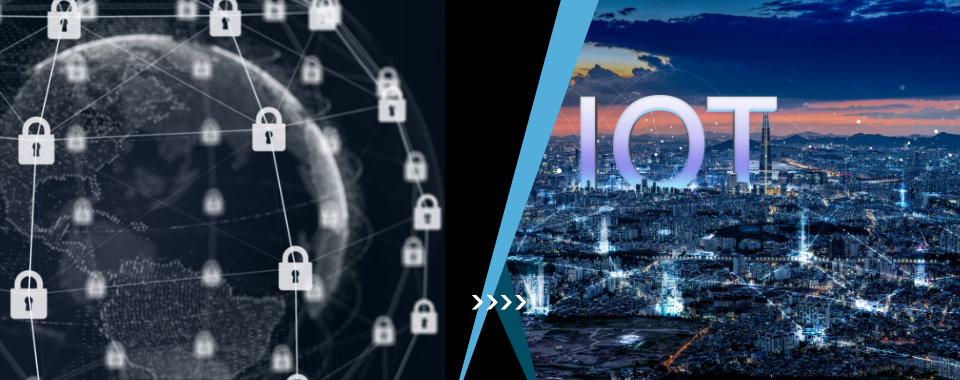
5G is more than just a faster connection—it’s a game changer for how we connect with the world around us. With its ability to handle more devices, provide faster speeds, and lower delays, 5G is set to take the Internet of Things (IoT) to a whole new level. But as more devices get connected, one big question arises: How can we keep these connections secure? In this blog, we’ll explore how it can improve IoT security, while also addressing the challenges it brings.
The Promise of 5G for IoT Security
5G technology isn’t just about speed; it’s about smarter, more efficient networks. With 5G, we can connect billions of devices at once, from smart home gadgets to industrial machines. This growth in IoT devices means there’s more data being exchanged than ever before. But with more devices and data comes a greater risk of cyberattacks. Fortunately, 5G comes with a range of security improvements that can help protect these devices and the data they carry.
1. Stronger Encryption and Authentication
One of the standout features is its ability to provide stronger encryption for data. Encryption is like locking your data in a safe to prevent unauthorized access. With 5G, encryption methods are more advanced, making it harder for hackers to intercept and steal data. Additionally, 5G networks offer better authentication protocols, ensuring that only trusted devices can connect to the network. This means fewer chances for attackers to breach IoT devices.
2. Network Slicing for Better Control
5G also brings a concept called “network slicing,” which essentially divides the network into smaller, more manageable sections. Each slice can be customized for specific needs, such as one for healthcare devices and another for smart cars. This makes it easier to isolate critical IoT applications and protect them from potential threats. For example, if a hacker tries to attack one slice, the other slices are still safe and secure, limiting the damage.
3. Monitoring and Faster Response
One of the biggest security advantages is its low latency, which means data can be transmitted with little delay. This opens the door for real-time monitoring of IoT devices, which can quickly detect and respond to security threats. If a device starts acting suspiciously, security systems can react faster and shut it down before any real harm is done.
Merging IoT and 5G Technology
The merger of IoT and 5G technology is a key element in the evolution of modern tech. The high-speed, low-latency nature is ideally suited to meet the demands of an extensive IoT network. It provides the required bandwidth and speed to manage the data from billions of IoT devices. This synergy is opening exciting new possibilities across various sectors. In smart cities, for instance, 5G can significantly boost IoT applications in areas such as traffic management, public safety, and environmental monitoring, offering real-time data analysis and enhancing city services.
In healthcare, IoT and 5G drives progress in telemedicine and patient monitoring. It enables the real-time transmission of data, which can be crucial in saving lives. The increasing number of IoT devices in healthcare, which is expected to generate up to $108.60 billion in revenue by 2024, underscores the vast potential of this integration. In agriculture, IoT devices used for monitoring crop health, soil conditions, and weather can be significantly improved with the capabilities of 5G, leading to more efficient and productive farming practices.
The Challenges 5G Brings to IoT Security
While 5G certainly enhances security, it also introduces new challenges that need to be addressed. Here are a few things to watch out:
1. More Devices, More Risk
As 5G connects more and more devices, each one becomes a potential target for hackers. Whether it’s a smart thermostat in your home or a sensor in a factory, every IoT device is a point of entry. With billions of connected devices, securing them all can be a huge challenge. This means the responsibility for IoT security won’t just fall on telecom providers or tech companies—it will also require individuals and businesses to take steps to secure their devices.
2. Complexity in Managing Security
5G’s ability to handle a large number of devices and provide different types of services means the network is more complex than ever before. This complexity makes it harder to manage security effectively across the board. For example, securing a network slice designed for healthcare devices is different from securing one for smart cars. To ensure that every part of the network is protected, businesses will need to be proactive about security measures and work closely with network providers.
3. Evolving Threats
As 5G opens up new opportunities, it also invites new kinds of cyber threats. Hackers are constantly finding new ways to break into systems, and with the added complexity of 5G, the potential for unknown vulnerabilities grows. The fast pace at which 5G is evolving means that security systems will need to continuously adapt to stay ahead of potential threats.
Striking the Right Balance
5G is set to revolutionize the way we use IoT, offering new levels of speed, security, and connectivity. But as with any new technology, it comes with its own set of challenges. The key to making the most of 5G’s security benefits is to stay aware of the potential risks and be proactive about addressing them.
The good news is that 5G’s advanced security features give us the tools to better protect IoT devices. However, as we move into this new era, it’s important that everyone—from tech companies to everyday users—plays their part in securing the connected world.
Final Thoughts
IoT and 5G present a wealth of opportunities for businesses and consumers, driving innovation across various industries and transforming the way we live and work. By harnessing the power of 5G networks, IoT devices can achieve unprecedented levels of connectivity and efficiency, enabling a new era of digital innovation.
However, as we embrace the benefits, it is crucial to remain vigilant about the security challenges that may arise. By prioritizing IoT security and adopting a collaborative approach to protecting networks and devices, businesses and network providers can unlock the full potential of this powerful convergence while ensuring the safety and privacy of their data.
Follow us for more insights








